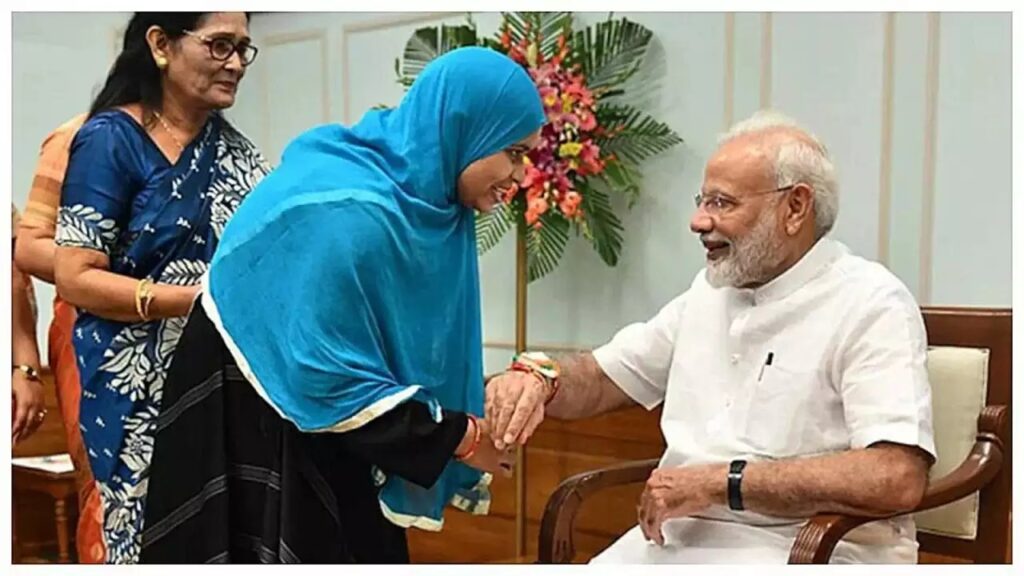How Rabindranath Tagore Leveraged Raksha Bandhan to Prevent the 1905 Bengal Partition

Introduction
Amidst the vibrant celebrations of Raksha Bandhan, an Indian festival venerating the bond between siblings and their protective affection, the ingenious applications of this heartfelt connection have often transcended personal relationships to achieve broader societal objectives. One of the most remarkable instances of this was the visionary employment of Raksha Bandhan by Nobel Laureate Gurudev Rabindranath Tagore to thwart the British government’s divisive agenda during the tumultuous events of the 1905 Bengal partition.
The Symbolic Transformation
During the pivotal year of 1905, as British colonial rule cast a shadow over India, Gurudev Rabindranath Tagore harnessed the essence of Raksha Bandhan in a manner that extended far beyond familial ties. He astutely transformed this age-old tradition into a beacon of hope and harmony, fostering a collective sentiment of unity among the masses. His clarion call traversed communal boundaries, urging diverse communities to unite and stand as protectors of one another. This rallying cry led to an unprecedented scene – Hindus and Muslims publicly exchanging rakhis, solidifying promises of love and harmony.

A Pledge of Unity
Under the oppressive grip of British colonialism, Hindus and Muslims vowed to shield one another from the tyranny of the ruling powers and their insidious divide-and-conquer tactics. What was once a festival confined to the sanctity of family homes took on an entirely new dimension, becoming a powerful political tool under Tagore’s discerning guidance.
The Historical Context
The backdrop against which this transformation occurred was the British government’s calculated “divide and rule” strategy, with Bengal squarely in its sights. The strategic partition aimed to streamline British governance over the vast territory by exploiting existing religious fault lines.
The division itself was designed along religious lines: the eastern part of Bengal was predominantly Muslim, while the western portion was predominantly Hindu.

British Intentions Unveiled
Lord Curzon, the Viceroy of India at the time, left no room for ambiguity in the British intentions. He openly stated that the Muslim-majority region of Assam and Sylhet (now Bangladesh) was to be cleaved from the Hindu-majority region of West Bengal, Bihar, and Odisha. The partition order was formally passed in August 1905, and by October of the same year, its effects became tangible.

Tagore’s Ingenious Response
Amidst this tumult, Rabindranath Tagore harnessed the symbolism of Raksha Bandhan to mobilize society into forging a closely-knit communal fabric. While the actual partition eventually took place along religious lines, Tagore’s vision endures as a testament to the power of tradition in uniting people across divides.

Legacy and Contemporary Echoes
Even today, long after the historical events of the 1905 Bengal partition, Raksha Bandhan continues to serve as a bridge of unity in various contexts. In the region of Bagpath in western Uttar Pradesh, for example, a unique tradition sees Hindu women symbolically adopting Muslim brothers, cementing their bond with a rakhi. In return, these brothers pledge to abstain from vices. For centuries, Raksha Bandhan symbolized the familial bond; yet, in the hands of Rabindranath Tagore, it evolved into an emblem of resistance against colonial oppression.
Conclusion
Rabindranath Tagore’s strategic employment of Raksha Bandhan transcended its traditional roots, transforming it into a powerful symbol of unity and resistance. In an era marked by divisive politics, Tagore’s vision continues to inspire, reminding us of the enduring capacity of cultural traditions to foster social change and forge unbreakable bonds of unity.
Frequently Asked Questions (FAQs)
1. Did Rabindranath Tagore’s efforts directly lead to stopping the Bengal partition?
While Tagore’s efforts significantly contributed to fostering unity and resistance against the partition, the eventual reversal of the decision in 1911 was the outcome of a complex interplay of factors, including widespread protests and shifting political dynamics.
2. How did Tagore’s use of Raksha Bandhan impact the relationship between Hindus and Muslims?
Tagore’s ingenious use of Raksha Bandhan to promote unity between Hindus and Muslims conveyed a potent message of solidarity. It helped create a shared sense of purpose and resilience against the British colonial agenda.
3. Is Raksha Bandhan still celebrated with similar sentiments today?
Indeed, Raksha Bandhan is still celebrated with profound sentiments of affection and safeguarding among siblings. Moreover, its historical significance in fostering unity continues to resonate in diverse ways.
4. Were there other instances of using cultural traditions for political purposes in history?
Throughout history, diverse cultural and traditional practices have been repurposed for political or social objectives. These instances underscore the remarkable capacity of collective symbolism to drive transformative change.
5. How does Tagore’s legacy influence modern India’s social fabric?
Tagore’s legacy as a poet, philosopher, and visionary profoundly impacts modern India’s social fabric. His emphasis on unity, diversity, and cultural pride resonates with contemporary efforts to construct an inclusive society.